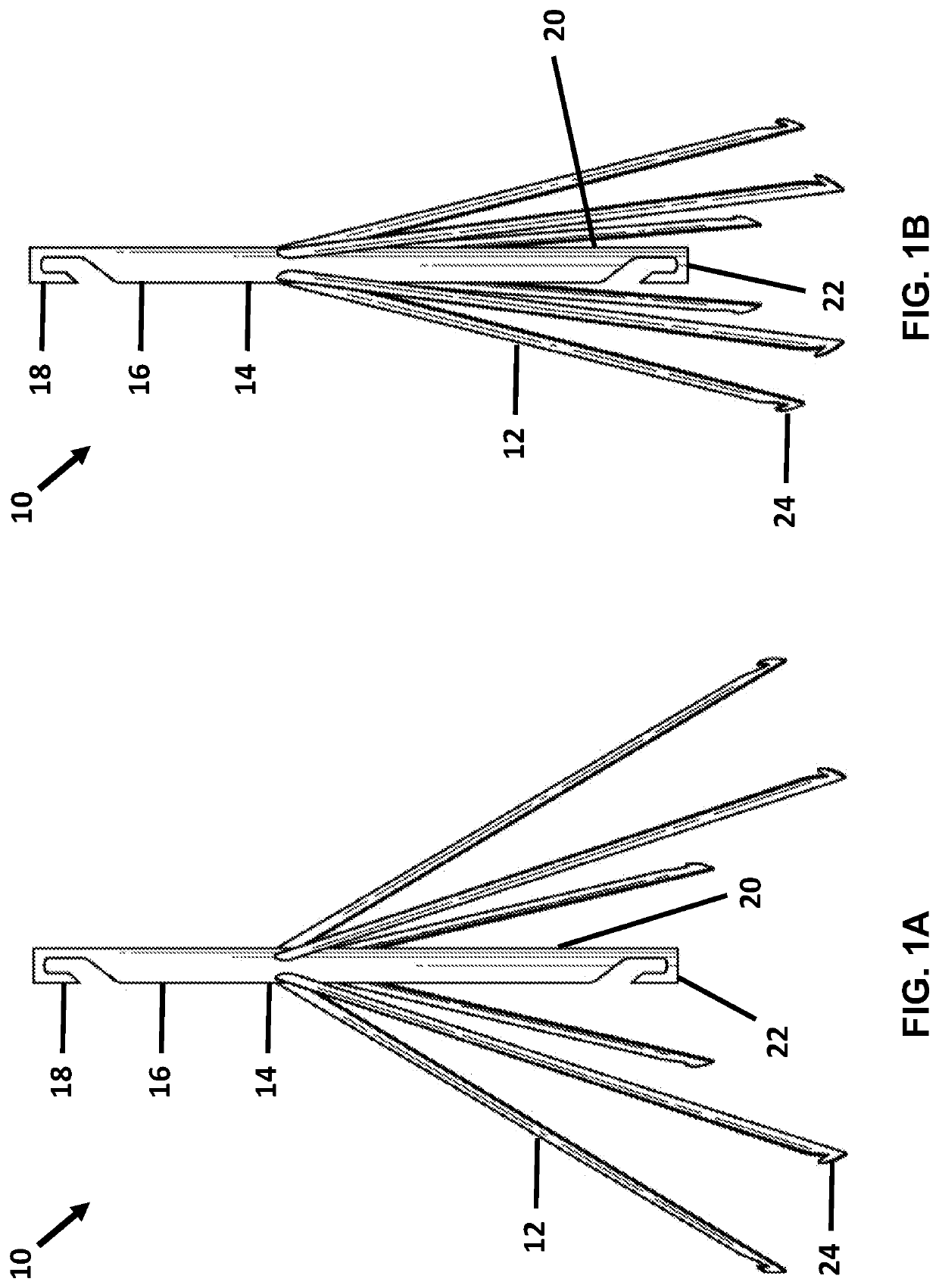Inferior vena cava (IVC) filter and related methods
a filter and inferior vena cava technology, applied in the field of inferior vena cava filter, can solve the problems of total blockage of the ivc, clotting of the ivc, complications of the circulatory system, etc., and achieve the effect of easy repositioning of the filter apparatus, cross-sectional area, and easy engagemen
- Summary
- Abstract
- Description
- Claims
- Application Information
AI Technical Summary
Benefits of technology
Problems solved by technology
Method used
Image
Examples
Embodiment Construction
[0020]As can be understood from the Background, there are numerous shortcomings of conventional IVC filters. Maldeployment occurs too frequently, which causes tilting and increases the probability of the IVC filter hook embedding into the IVC wall. Once the hook is positioned near the wall, contacting the wall, or embedded within the wall, there is no ability to pull the hook back away from the wall. Additionally, conventional IVC filters with multiple components soldered together can break and the small legs can embed in tissue or migrate.
[0021]To overcome these problems, an improved IVC filter is disclosed. As shown, the IVC filter (10) includes a plurality of legs (12) which are connected to a body (14). The body (14) includes a proximal segment (16) for a proximal hook (18) on the top of the IVC filter (10). The presence of the proximal segment (16) and proximal hook (18) at the top of the IVC filter (10) may not be dissimilar from that of a conventional IVC filter, however, the...
PUM
 Login to View More
Login to View More Abstract
Description
Claims
Application Information
 Login to View More
Login to View More - R&D
- Intellectual Property
- Life Sciences
- Materials
- Tech Scout
- Unparalleled Data Quality
- Higher Quality Content
- 60% Fewer Hallucinations
Browse by: Latest US Patents, China's latest patents, Technical Efficacy Thesaurus, Application Domain, Technology Topic, Popular Technical Reports.
© 2025 PatSnap. All rights reserved.Legal|Privacy policy|Modern Slavery Act Transparency Statement|Sitemap|About US| Contact US: help@patsnap.com


